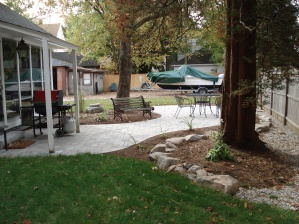We commonly get asked the question, “Which product is better for planting beds, Mulch or Stone?” Each product has their pros and cons, but ultimately it comes down to personal preference.
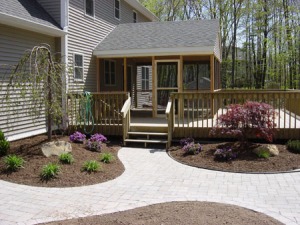 Mulch is great around plants because it preserves moisture and prevents extreme temperature fluctuations. During the summer, mulch protects the soil from the hot sun rays therefore reducing water evaporation. In winter, the mulch insulates the soil reducing frost heaving and the possibility of root damage. Over time, mulch will break down and slowly add nutrients and organic matter to the soil. As mulch decomposes, the activity of beneficial microorganisms in the soil will increase and soil porosity and moisture retention will improve. This will provide a very healthy environment essential for root growth. However, there are some drawbacks with mulch. As mulch decomposes, a thin 1” layer of new mulch should be added annually to keep your planting beds neat and healthy.
Mulch is great around plants because it preserves moisture and prevents extreme temperature fluctuations. During the summer, mulch protects the soil from the hot sun rays therefore reducing water evaporation. In winter, the mulch insulates the soil reducing frost heaving and the possibility of root damage. Over time, mulch will break down and slowly add nutrients and organic matter to the soil. As mulch decomposes, the activity of beneficial microorganisms in the soil will increase and soil porosity and moisture retention will improve. This will provide a very healthy environment essential for root growth. However, there are some drawbacks with mulch. As mulch decomposes, a thin 1” layer of new mulch should be added annually to keep your planting beds neat and healthy.
Stone is a very decorative and low maintenance alternative to mulch. When using stone, it is best to place landscape fabric underneath to prevent weeds from encroaching and the stones from sinking deep into the soil. Stone does not provide any nutritional benefits to the soil like organic bark mulch, but it deters insects and disease causing pathogens from inhabiting planting beds. Stone can become extremely hot during the summer months and some plants may not be tolerant of these hot conditions. However, stone is very low maintenance and does not need to be replaced annually.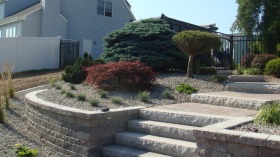

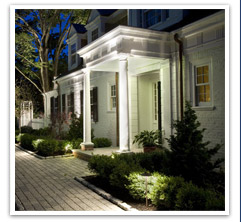
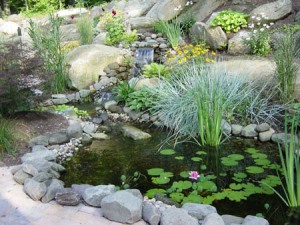
 Native plants…for the past few years in plant circles there’s been a lot of buzz about the plants that are native to a region. Many have been under-promoted, unappreciated and under-used, and there’s been a strong movement to bring them into the cultivated landscape. But are natives in fact better suited to our soils and climates, and more resistant to pests, than are the more popular and commonly offered exotics (plants that have their origins in other parts of the world)? To some extent this can be true. For example, many broadleaf evergreen rhododendrons that suffer in sunny, exposed sites here are better suited to the rainy, more temperate Pacific Northwest, and our native Swamp Azalea is more acclimated to the Northeast. But the Swamp Azalea doesn’t care for hot, dry sites any more than do its Asian cousins. Siting plants correctly really takes precedence in determining if they will thrive.
Native plants…for the past few years in plant circles there’s been a lot of buzz about the plants that are native to a region. Many have been under-promoted, unappreciated and under-used, and there’s been a strong movement to bring them into the cultivated landscape. But are natives in fact better suited to our soils and climates, and more resistant to pests, than are the more popular and commonly offered exotics (plants that have their origins in other parts of the world)? To some extent this can be true. For example, many broadleaf evergreen rhododendrons that suffer in sunny, exposed sites here are better suited to the rainy, more temperate Pacific Northwest, and our native Swamp Azalea is more acclimated to the Northeast. But the Swamp Azalea doesn’t care for hot, dry sites any more than do its Asian cousins. Siting plants correctly really takes precedence in determining if they will thrive.



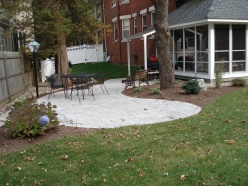 Many landscape projects expand as they progress. Other times it is obvious what needs to be done as a design is developed. Within this project, when Daren first looked over the project many aspects of the landscape were considered. First Daren went over the customer’s objectives with them. Upon learning what was hoped to be accomplished a plan was laid out to meet those objectives. The first order of business for an overhaul of this yard was tree pruning and removal. Without allowing sufficient sunlight into the yard the new plantings and sod would not last too long. Although some plants do well in shade it is limiting and the sod definitely needs sunlight.
Many landscape projects expand as they progress. Other times it is obvious what needs to be done as a design is developed. Within this project, when Daren first looked over the project many aspects of the landscape were considered. First Daren went over the customer’s objectives with them. Upon learning what was hoped to be accomplished a plan was laid out to meet those objectives. The first order of business for an overhaul of this yard was tree pruning and removal. Without allowing sufficient sunlight into the yard the new plantings and sod would not last too long. Although some plants do well in shade it is limiting and the sod definitely needs sunlight.